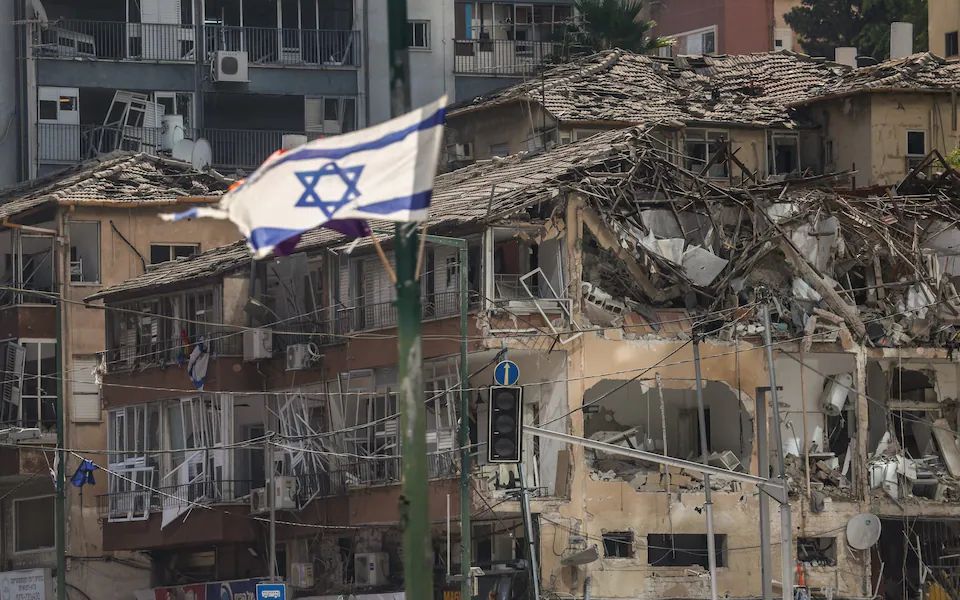The United States has launched targeted airstrikes on Iran’s nuclear infrastructure in what President Donald Trump hailed as a “very successful attack,” marking a dramatic escalation in a conflict that has already claimed hundreds of lives across the region.
The strikes, carried out late Saturday, targeted three of Iran’s key nuclear sites — Fordow, Natanz, and Isfahan — with Trump confirming that Fordow was hit with a “full payload of bombs.” The Iranian government has condemned the assault as a grave violation of international law and warned of “everlasting consequences.”
Precision Strikes on Hardened Targets
According to U.S. officials, the strikes were conducted using bunker-buster bombs, likely the GBU-57 Massive Ordnance Penetrator, dropped by B-2 Spirit stealth bombers. These aircraft, capable of flying undetected for thousands of miles, are uniquely equipped to breach deeply fortified underground facilities like Fordow, which is built under a mountain near the holy city of Qom.
The Natanz site, Iran’s main uranium enrichment center, and the Isfahan uranium conversion facility were also struck, reportedly by Tomahawk cruise missiles. Trump, flanked by Vice President JD Vance, Defense Secretary Pete Hegseth, and Secretary of State Marco Rubio during the announcement, described the operation as a necessary measure to “eliminate threats to global peace.”
Iran Responds: “All Options on the Table”
Iranian Foreign Minister Abbas Araqchi condemned the strikes as a direct attack on Iranian sovereignty. “Iran reserves all options to defend its sovereignty, interests, and people,” he said in a statement, warning that retaliation could be imminent.
Iran’s Islamic Revolutionary Guard Corps (IRGC) responded overnight by launching at least 40 missiles at Israeli targets, including Tel Aviv and military sites across the country. Israel’s Health Ministry reported 86 injuries, while at least three missiles reportedly penetrated air defenses and hit residential areas.
In Iran, state media reports that 430 people have been killed and 3,500 injured since Israeli airstrikes began on June 13. Israeli casualties stand at 24 dead and 1,272 injured, according to local authorities.
A Region on the Brink
The conflict has thrust the Middle East into its most dangerous moment in years. The U.S. strikes follow more than a week of open warfare between Iran and Israel, sparked by what Israeli officials said was intelligence indicating Iran was close to producing nuclear weapons.
Western efforts to mediate — including outreach from Britain and Germany — have so far failed. U.N. Secretary-General António Guterres warned the U.S. strikes represent a “dangerous escalation” and called an emergency Security Council meeting.
Read Also:
Israel-Iran conflict: Trump weighs, holds off decision for two weeks
Fears of WW3 grow as U.S deploys military Arsenal over Iran-Israel conflict
Tehran: Pakistan will attack Israel if nuclear weapon is used
Despite widespread fears of a regional conflagration, Trump insisted the door to diplomacy remains open. “Now is the time for peace,” he said, though he warned that “if peace does not come quickly, we will go after those other targets.” Washington had privately assured Tehran that regime change was not the goal, but Iran’s leaders remain unconvinced.
Global Fallout and Civilian Fear
The international community is bracing for ripple effects. Airspace over the region remains restricted, with airlines rerouting or suspending flights across vast portions of the Middle East.
Civilians across Iran and Israel are living in fear. “Our future is dark. We have nowhere to go — it’s like living in a horror movie,” said Bita, a teacher in central Iran, before her phone line went dead.
Meanwhile, Gulf Arab states — many of which have recently sought rapprochement with Iran — have expressed deep concern over the escalation, fearing their energy infrastructure may become collateral damage.
Nuclear Fallout — Literal and Political
While the International Atomic Energy Agency (IAEA) reported no off-site radiation leaks, its director, Rafael Grossi, has called for an emergency meeting of the agency’s 35-member board.
A senior Iranian official claimed much of the enriched uranium had been moved out of Fordow before the attack, and nuclear personnel had been evacuated. However, Iran’s Atomic Energy Organisation vowed to continue developing its national nuclear industry.
Tehran has also raised the possibility of withdrawing from the Nuclear Non-Proliferation Treaty (NPT), a move that could permanently alter the region’s nuclear landscape.
As tensions reach a boiling point, world leaders are urging calm. Whether these events lead to renewed diplomacy or a wider war remains uncertain — but for millions in the region, the threat is already deeply personal and dangerously close.



